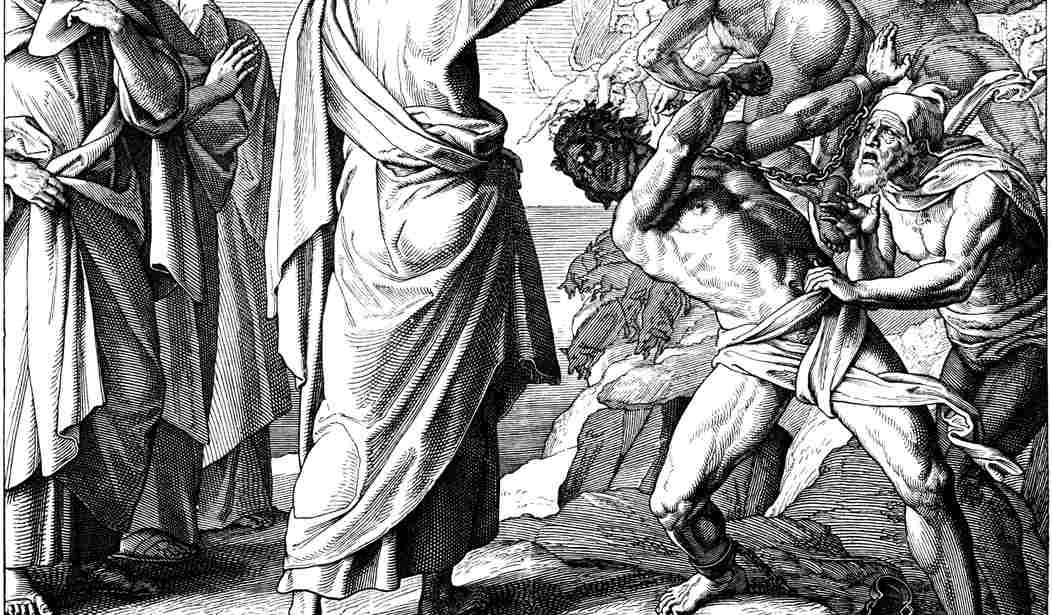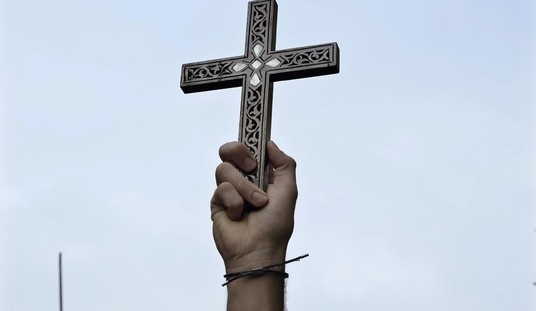A liberal British theologian and religious artist recounted crafting a collage showing Jesus performing an exorcism in an attempt to appeal to less conventional church-goers. Instead, the artwork was removed at the request of a lesbian. The artist and theologian responded by declaring that the church cannot be made into a “safe space,” as that would destroy Christianity. Unfortunately, his own willingness to reinterpret scripture at the behest of the LGBT movement has already sacrificed Christianity for cultural relevance.
“Are holy snowflakes smothering the [Church of England]?” Theo Hobson, a theologian who studied at Cambridge and who has long embraced homosexual activity in the church, wrote in Britain’s The Spectator.
Hobson recalled getting “a bit more serious” about his amateur religious art, and he recently made artwork for a church in London. “The vicar, a friend, suggested it might appeal to youngish people somewhat at odds with conventional church. I made a large fabric collage depicting an exorcism: Jesus casting out a demon,” he wrote.
“A few weeks later the vicar told me that the picture had been taken down, following a complaint,” Hobson recalled. The complaint had less to do with style than with substance: “this person felt very uncomfortable due to the anti-LGBT associations of exorcism.”
The art proved too controversial for a lesbian visitor. “She thought that this was a community in which she could feel safe — and she had brought her girlfriend to a service hoping to show her how welcoming it was —and instead this slap in the face: an art work that seemingly celebrates the toxic practice of ‘deliverance’ used by anti-gay fundamentalists,” the artist wrote. Reportedly, the lesbian woman was so shaken she was losing sleep.
Indeed, some Christians have abused LGBT people, resorting to exorcism in an attempt to rid a child of same-sex attraction or gender dysphoria (the persistent condition of identifying with the gender opposite your biological sex). These abuses should not spoil exorcism, however, and they should not push Christians into rejecting biblical sexuality in an attempt to recompense for past sins.
Hobson marveled at being “accused of persecuting homosexuals, on account of having attempted to depict the theme of exorcism.” The theologian rightly asked, “Isn’t exorcism in the Bible? Would she like Jesus’ exorcisms to be snipped from the gospels?” The vicar of the church in question “agreed that her complaint was theologically shaky, but said that we are living in a rising climate of sensitivity, including in the churches.”
The push to make the church into a “safe space” comes from secular concerns more than a desire to be faithful to the gospel, Hobson suggested.
He spoke with a London vicar who had worked at a cathedral commissioning works of art. “What I’ve noticed is that sensitivity has become more secular than religious — it used to be that people were nervous of doing or saying something sacrilegious; now they’re more likely to worry about giving secular offence,” the vicar told him. “And often they are not really offended themselves but are imagining other people’s reactions; they are upset on others’ behalf.”
“So I sometimes have to persuade parishioners that something is not as problematic as they fear,” the vicar concluded.
Another vicar told Hobson that her parishioners are excessively worried that traditional Christian themes might seem illiberal. “We were planning a series of Lent talks last year, and brainstorming for a theme. I thought ‘sin’ would be pretty uncontroversial, but the most vocal members of the group were dead set against it,” she said.
Ultimately, Hobson — a liberal who has long embraced homosexual activity as acceptable for Christians — accepted the fact that “faith is controversial. There’s no getting away from it, and that’s no bad thing. Anything worthwhile is and should be challenging.”
The liberal theologian presented the challenges involved in a few of Christian art’s most famous images:
Adam and Eve is troubling on three grounds: their nakedness, which is simultaneously innocent and (in our fallen eyes) not; their stubborn heterosexuality; and Eve’s alleged culpability for the human disaster. Then there’s the Passion, with the crucifixion and related events. All that glorying in pain. The same applies to depictions of martyrs. Finally, images of victory: Christ or one of his stand-ins crushes Satan underfoot or lances a dragon or raises a victory banner (which bears an unfortunate resemblance to the England flag). We have already seen the umbrage people take when you persecute demons.
Hobson ended his article by declaring that “instead of tiptoeing away from their tradition, Christians should embrace it. Neither faith nor creativity is compatible with running scared.”
Then the pivotal line: “The church should be a refuge but it can’t be a safe space.”
Ironically, Hobson himself has arguably been complicit in making the church a safe space. This theologian has long argued that modern homosexual activity is not the same thing as homosexual activity in the days of the early church, when St. Paul clearly forbade it on the grounds that it is inherently sinful.
Like many other pro-LGBT Christian thinkers, Hobson rightly pointed out that in ancient Roman culture, there were male temple prostitutes and a kind of sexual slavery existed, enabling men to abuse men. Modern homosexual activity based on consent is indeed different, but there is no conclusive evidence that the words used in 1 Corinthians 6 and 1 Timothy 1, which condemn “the effeminates,” “sodomites,” or “male prostitutes,” do not refer to everyone who engaged in homosexual activity, as opposed to merely the excesses of the practice.
Indeed, Romans 1 clearly states that sexual passion for members of the same sex is a curse, and Leviticus 18 and 20 condemn homosexual activity as an “abomination.” While Christians are no longer under the old Mosaic law, the New Testament emphatically declares that Christians are not to practice “sexual immorality,” which Jesus, the first disciples, and Paul would have interpreted as including homosexual practice.
Furthermore, Jesus specifically quoted Genesis in championing marriage as a “one flesh” union between one man and one woman.
The lesbian woman who complained about the exorcism collage did not just reject the imagery of Jesus casting out demons, she also rejected the Bible’s conception of sexuality.
Christianity centers on the truth that all people are sinful and need the saving love of Jesus Christ. The church needs to be a refuge for sinners, but it also needs to condemn sin and urge Christians to live moral lives. When the church shows a willingness to alter clear biblical moral teachings in order to conform with secular culture, it has become a “safe space” for sin, rather than just a refuge for sinners.
So many mainline denominations have accepted homosexual activity and gone on to reject more clear biblical teaching, such as the insistence that Jesus Christ is the only way to heaven and to a restored relationship with God the Father (John 14:6).
Christians can and should emphasize some biblical doctrines in order to appeal to non-Christians — the Bible’s push for racial equality, for example — but they should never alter key doctrine to appeal to a broad audience. Hobson’s article revealed that he knows this, and he draws the line at art depicting an exorcism at the hands of Jesus. He also seemed to consider sin non-negotiable.
The Gospels record at least seven acts of exorcism in Jesus’s ministry. They also record his disciples engaging in acts of exorcism, and even an exorcism done by other people who weren’t Jesus’s disciples, but who cast out demons in His name. Unpopular as exorcism may be, it is a fundamental aspect of the New Testament.
Hobson is right to insist that exorcism is a fundamental part of Christianity, and it cannot be cast out of the faith without tearing up the Bible. Would that he had the same view about sexual morality.









Join the conversation as a VIP Member